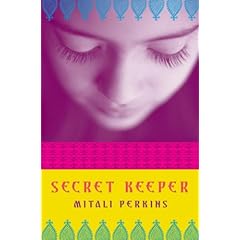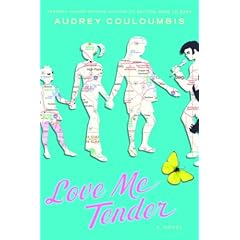“The story of Rumplestiltskin is what folklorists call a ‘Name of the Helper’ tale, in which a character must defeat a mysterious helper by discovering his True Name (or Secret Name or Hidden Name). . . I’ve also found it fascinating that in Rumplestiltskin, the heroine is known only as ‘the miller’s daughter’ or ‘the queen,’ while Rumplestiltskin’s name becomes a magical talisman–an object of power in and of itself. In a story about the potency of names, the heroine is anonymous.” –From the Author’s Note at the end of the book.
 Author Elizabeth Bunce gives the heroine in this retold fairy tale a name, Charlotte Miller. The other characters also have names: Rumplestiltskin becomes Jack Spinner, but of course, that’s only his everyday name. The revelation of his True Name awaits the end of the story. Charlotte’s love, and later husband, is Randall Woodstone, a stable and dependable pillar of love and faith in an otherwise precarious and unreliable world. Names and naming of both people and places in this book are very important. Note to readers: watch the names.
Author Elizabeth Bunce gives the heroine in this retold fairy tale a name, Charlotte Miller. The other characters also have names: Rumplestiltskin becomes Jack Spinner, but of course, that’s only his everyday name. The revelation of his True Name awaits the end of the story. Charlotte’s love, and later husband, is Randall Woodstone, a stable and dependable pillar of love and faith in an otherwise precarious and unreliable world. Names and naming of both people and places in this book are very important. Note to readers: watch the names.
The setting, too, is a key to the entire story. Again, in her author’s note Bunce tells us that Charlotte’s village is not based on any real place. However, it is some combination of late eighteenth century England and New England and influenced by the woolen industries of those countries as the Industrial Revolution changes manufacturing from a village-based, home-worker centered system to a city-based, factory system. Charlotte’s world is a pagan, superstitious place, with only a veneer of Christianity symbolized by crisis prayers and an occasional blessing on official occasions. Curses and hexes and wards and magic circles are the powers that be in this setting, and Charlotte must learn to fight the shadows and the curses of the past with her own inner courage and the help of friendly villagers and family.
A Curse Dark As Gold paints a picture in story of the essential hopelessness and darkness of paganism without ever presenting much of an alternative. Charlotte finds the ability within herself to love and forgive and break the curse of the past, but I’m not sure where that power comes from. I found the entire story to be both fascinating and terrifying. If all I have to depend upon is my own inner strength, or even the kindness of friends and strangers, it’s not enough. Although some whispered and desperate prayers and some Christian symbolism underlie the final denouement of the story, I’m glad I don’t live in Charlotte’s neck of the woods. It’s a scary place.
Blogger reviews:
Miss Erin: “I wonder how many times the word “gold” or “golden” appears in the book!? Golden hair and golden fields and Gold Valley and gold gold gold . . . it was obviously a major theme in it. I love themes in books.”
The Puck in the Midden: “I loved the way that marriage is presented as imperfect, as flawed, as not the happy ending, but instead as merely the middle of someone’s story. I loved the strong female characters, Charlotte and Rosie both, and I loved their flaws. I loved the very creepy ghost story.”
Melissa at Book Nut: “It took me a while — 50 pages or so — to get the rhythm of the book, to understand what Bunce was trying to do with Charlotte (she grated on me at the beginning, but eventually I understood, and liked, her as a character), and to really enjoy what I was reading. But once I got past that point, life got put on hold.”





